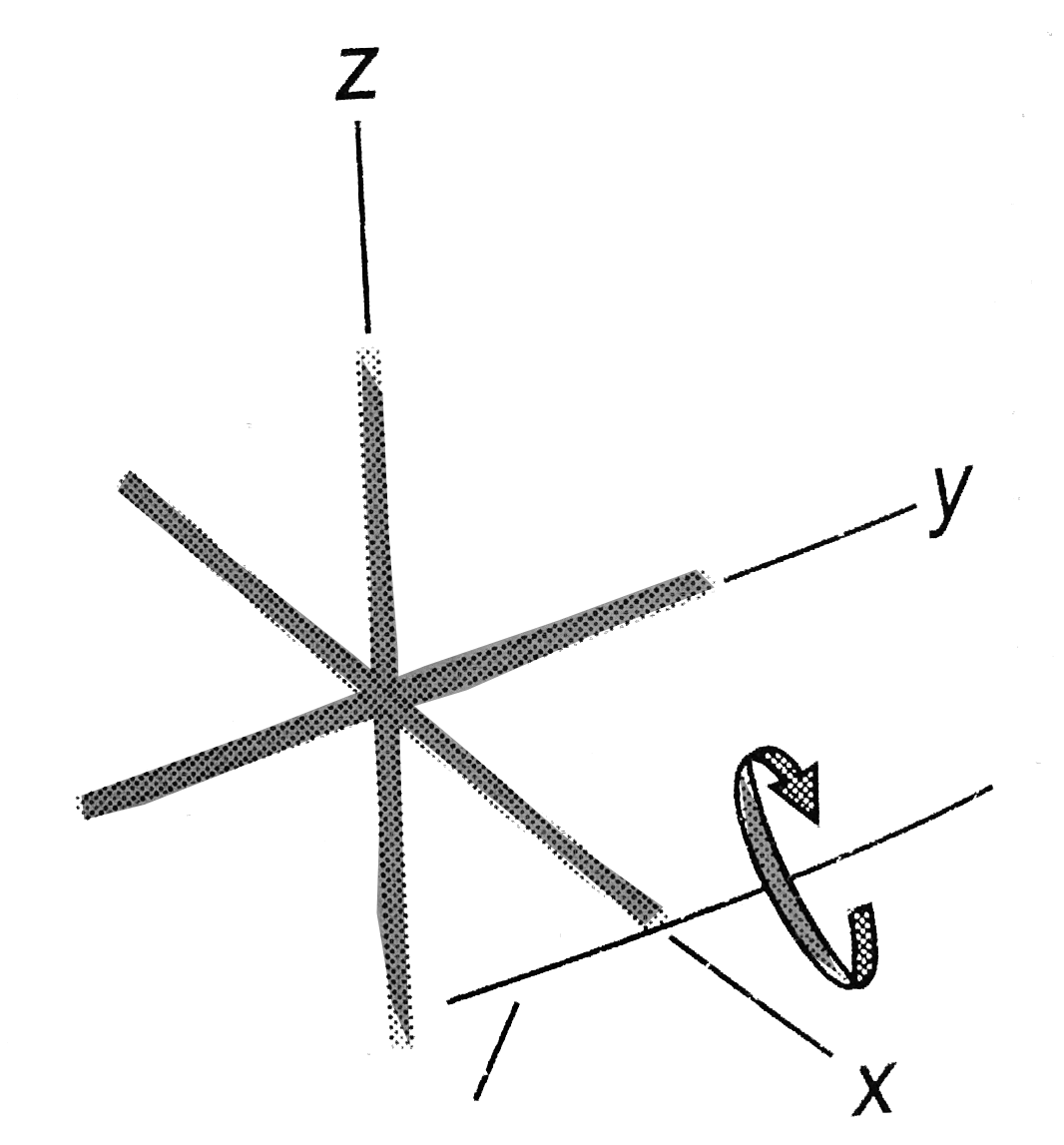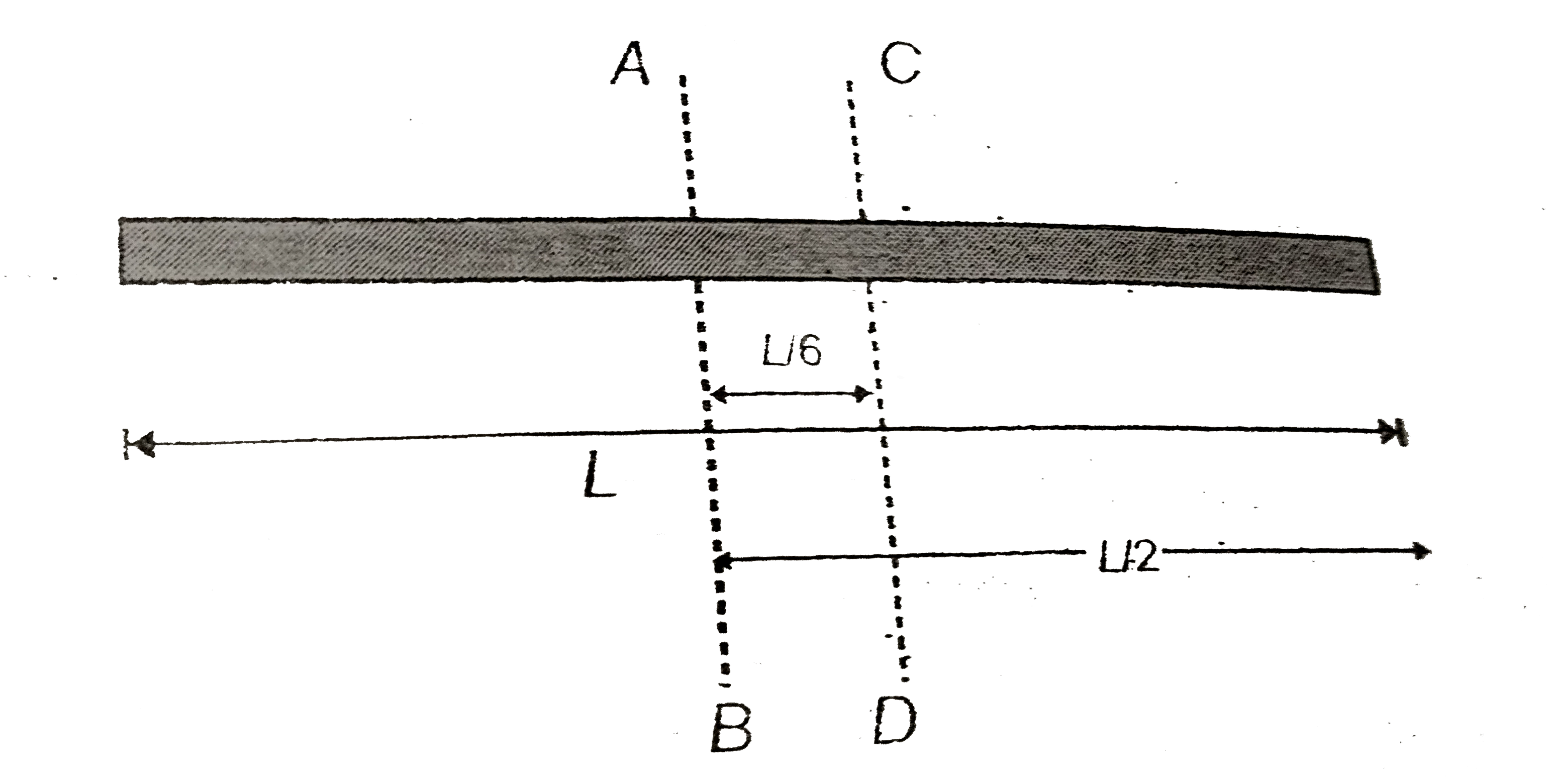The ratio of I∀IBB will be (both are identical thin rods of length L and mass M, joined together as shown in figure)

1:1
4:9
17:16
4:1
The correct Answer is:C
About AA'=ML23+[mL212+mL2]
By parallel axis theoram.
IAπ2=17ml212
About BB'=mL23+mL2
IBB'=174×34=1716 So, 17:16
Topper's Solved these Questions
- TEST PAPERSBOOK - BANSALCHAPTER - TEST PAPERSEXERCISE - PHYSICS PART (A)
32 Videos
- TEST PAPERSBOOK - BANSALCHAPTER - TEST PAPERSEXERCISE - PHYSICS PART (B)
3 Videos
- TEST PAPERSBOOK - BANSALCHAPTER - TEST PAPERSEXERCISE - PHYSICS PART- C
4 Videos
- SEMICONDUCTORSBOOK - BANSALCHAPTER - SEMICONDUCTORSEXERCISE - CBSE Question
32 Videos
Similar Questions
Knowledge Check
Three identical thin rods, each of length L and mass m, are welded perpendicular to one another as shown in figure. The assembly is rotated about an axis that passes through the end of one rod and is parallel to another. The moment of inertia of this structure about this axis is.
 .A712mL2B1114mL2C512mL2D1112mL2
.A712mL2B1114mL2C512mL2D1112mL2Three identical thin rods each of length l and mass M are joined together to form a letter H. What is the moment of inertia of the system about one of the sides of H?
A16Ml2B14Ml2C23Ml2D43Ml2Three identical thin rods each of length l and mass M are joined together to from a letter. H. What is the moment of inertia of the system about one of the sides of H ?
AMl24BMl23C2Ml23D4Ml23
Three identical thin rods each of length l and mass M are joined together to from a letter H. What is the moment of inertia of the system about one of the sides of H ?
View SolutionThe gravitational force of attraction between a uniform sphere of mass M and a uniform rod of length l and mass in as shown in figure is

View SolutionTwo identical thin uniform rods of length L each are joined to form T shape as shown in the figure. The distance of centre of mass from D is

View SolutionIn a street light of mass M is suspended from the end of a uniform rod of length L in different possible patterns as shown in figure, then :

View SolutionIn a street light of mass M is suspended from the end of a uniform rod of length L in different possible patterns as shown in figure, then :

View Solution


